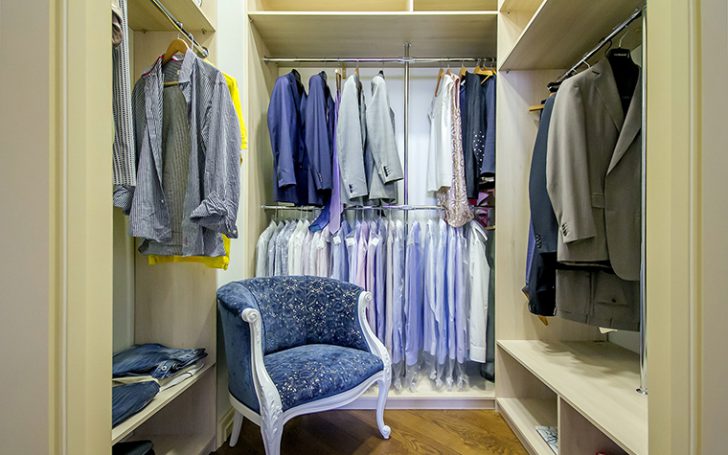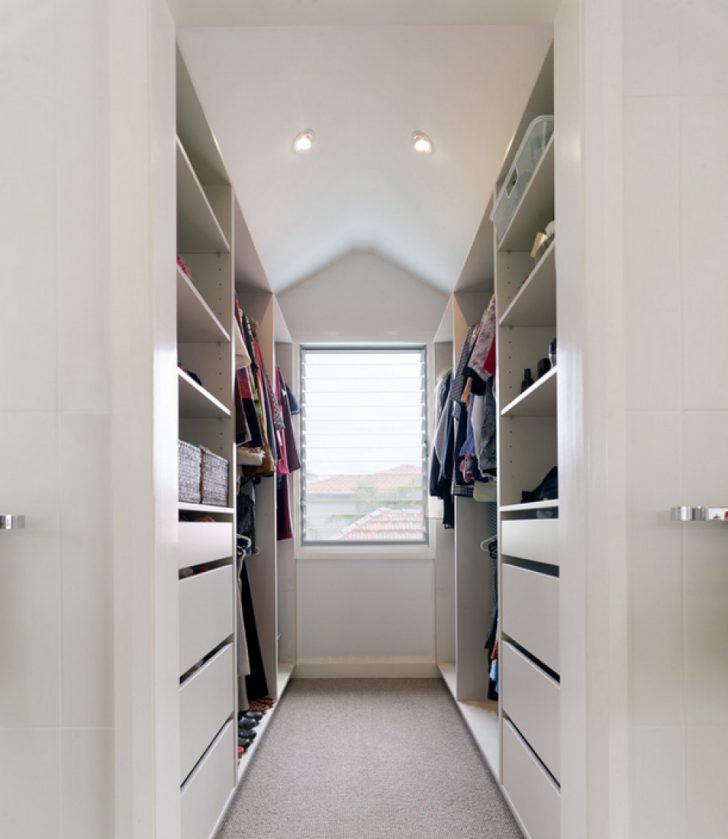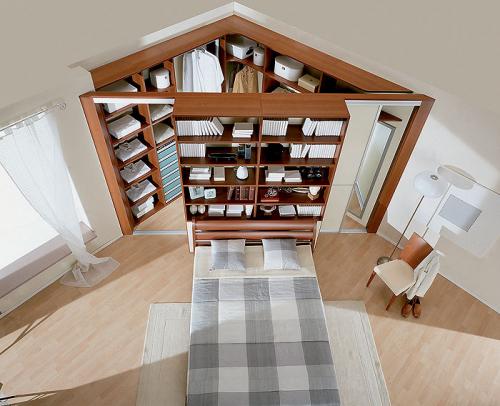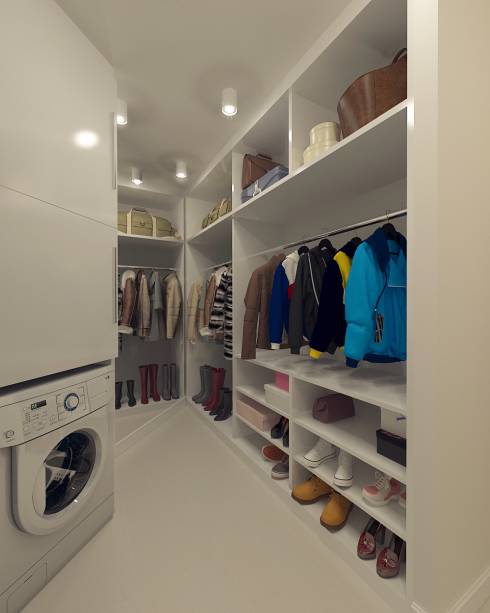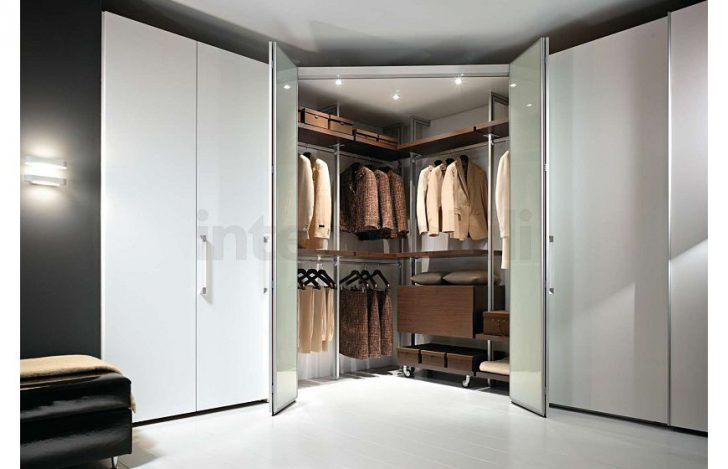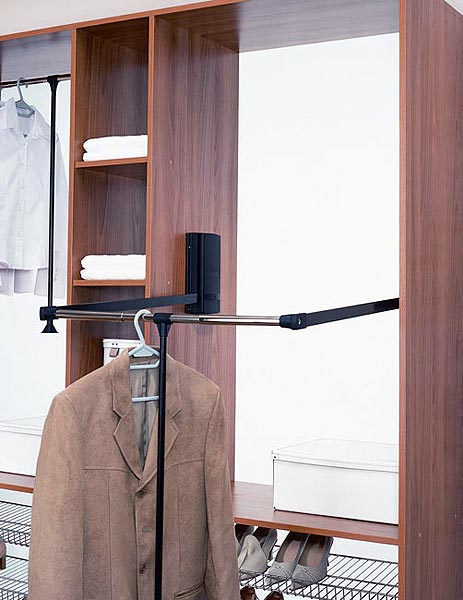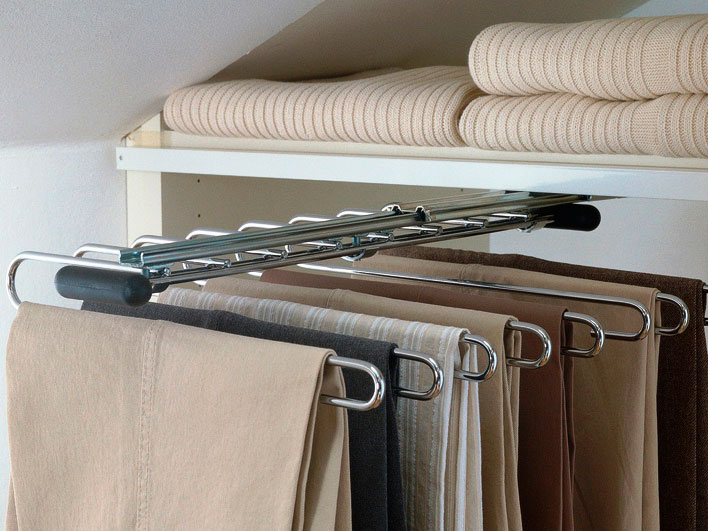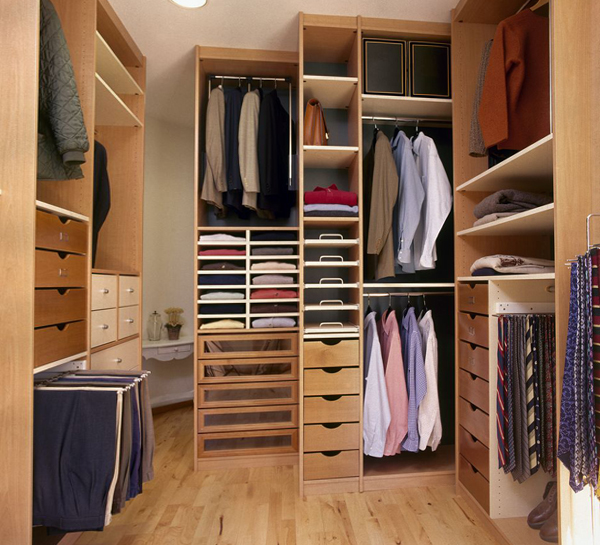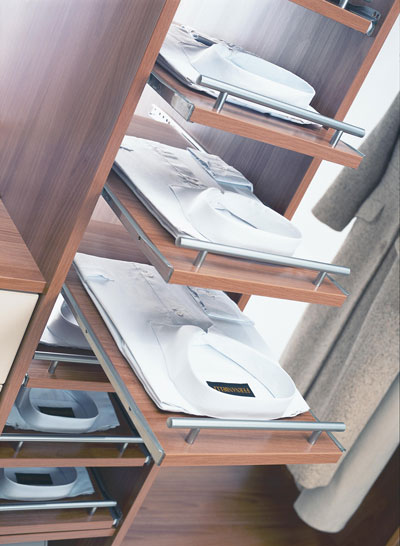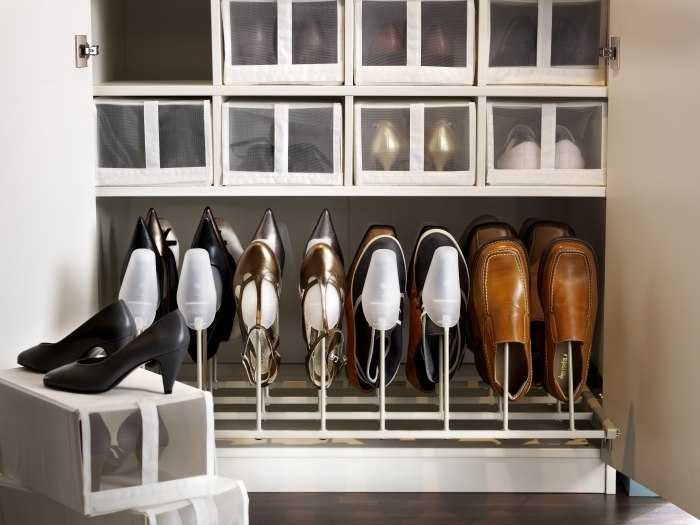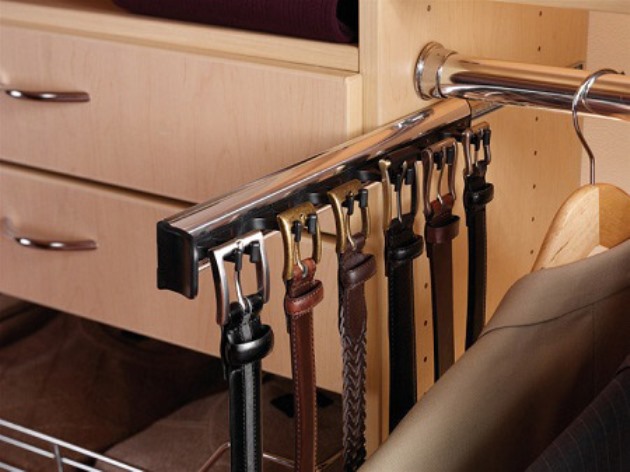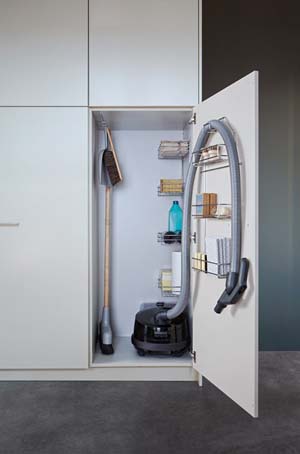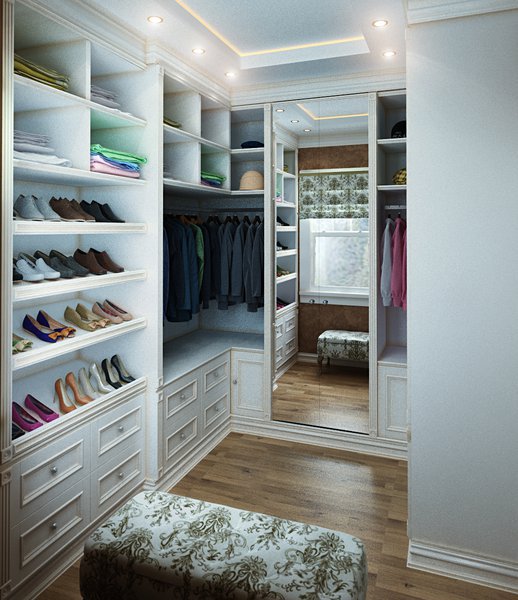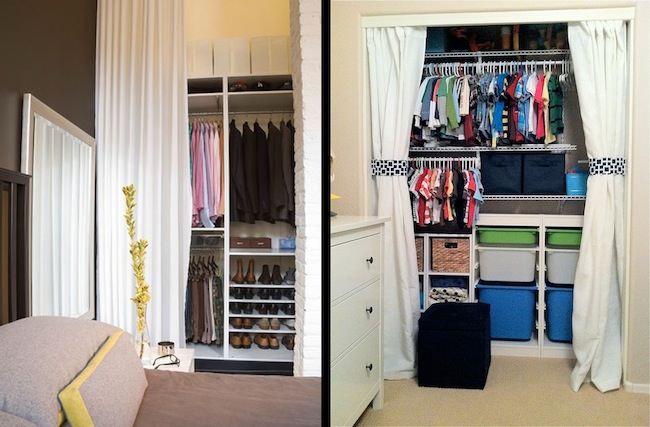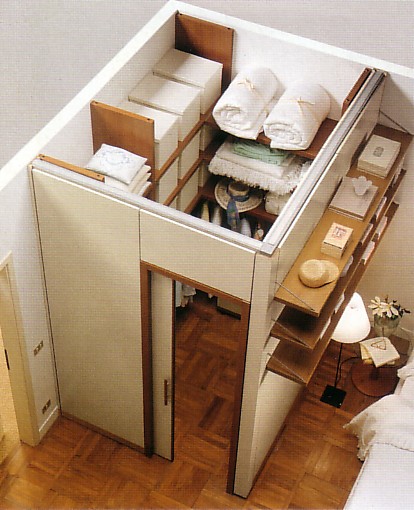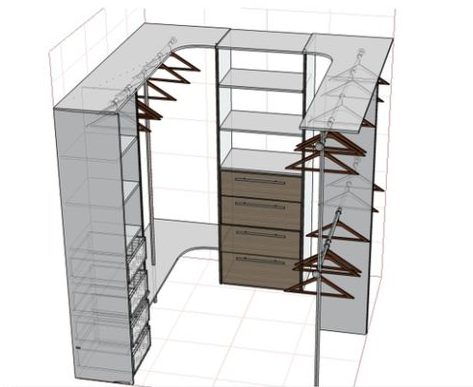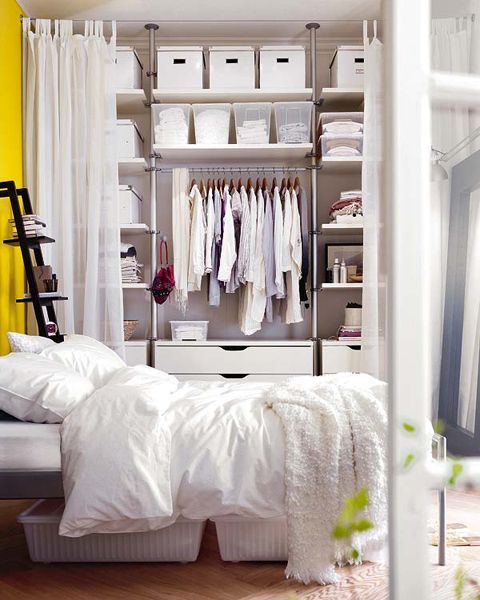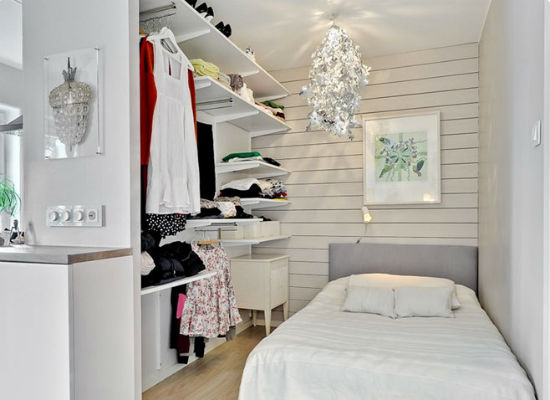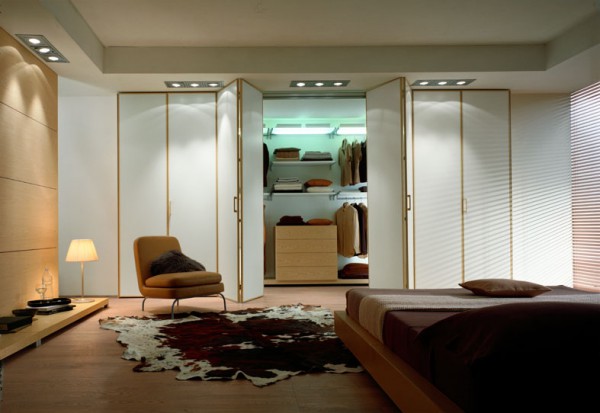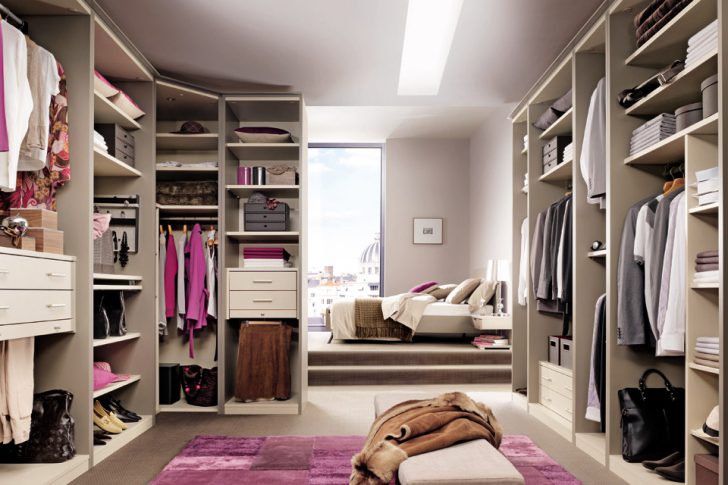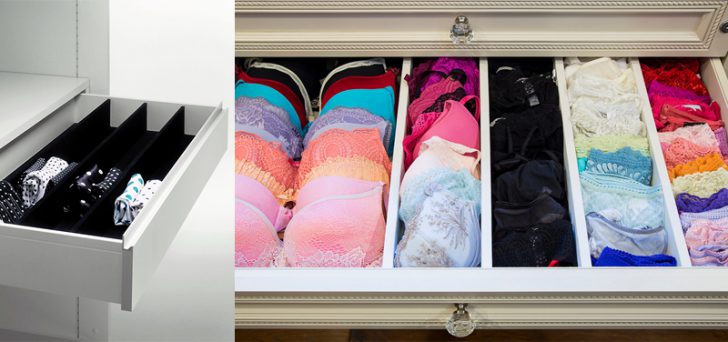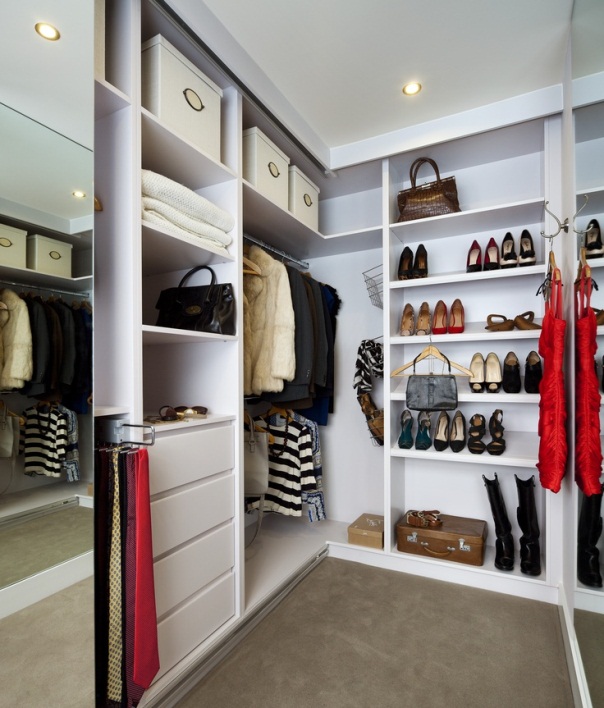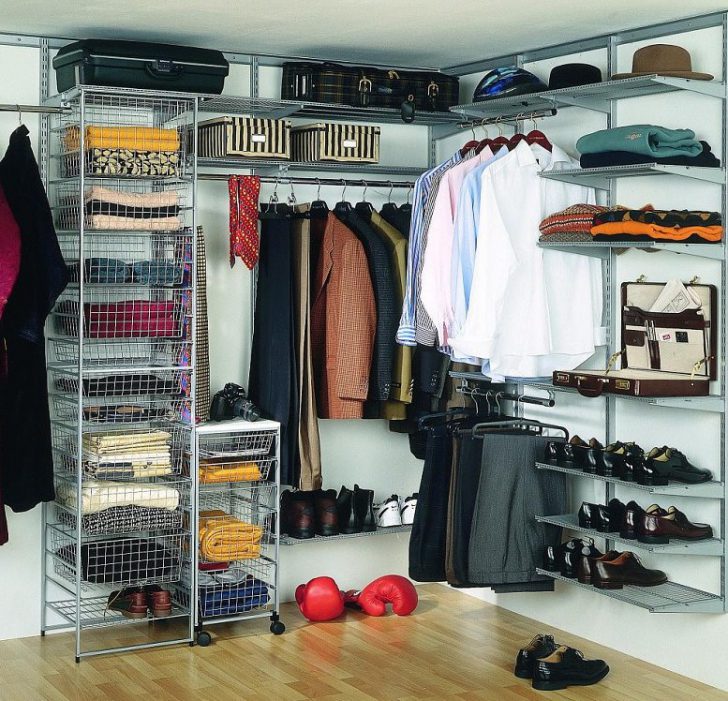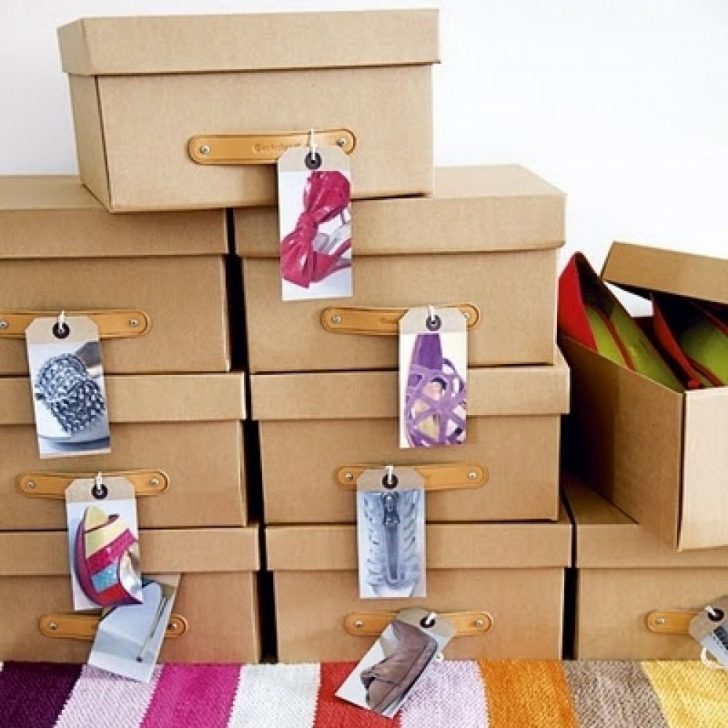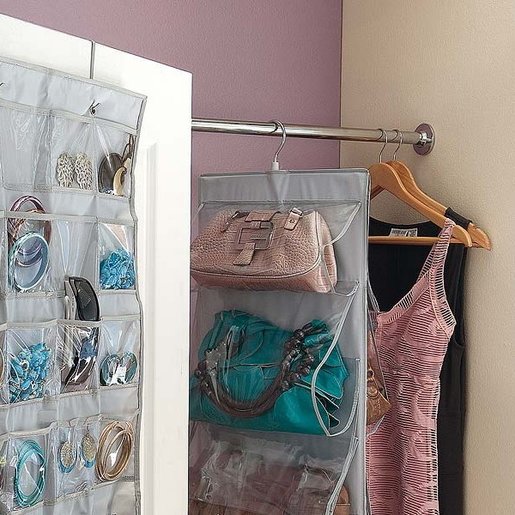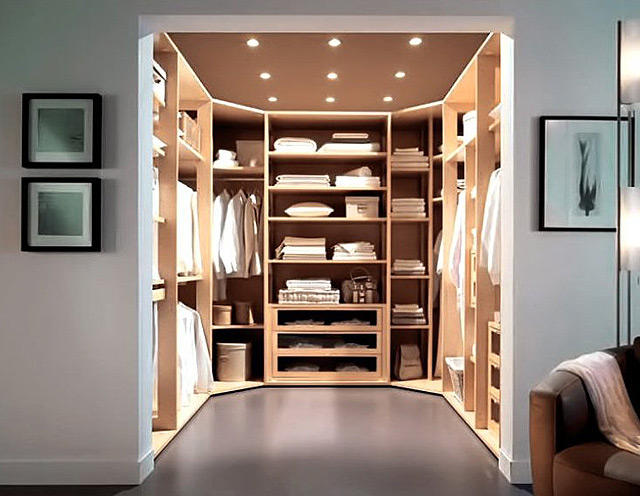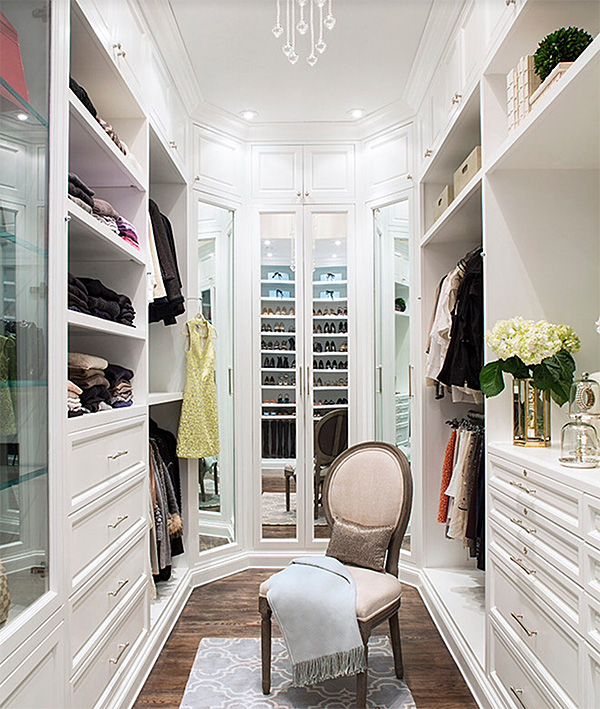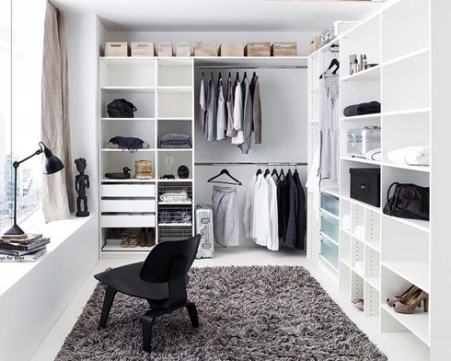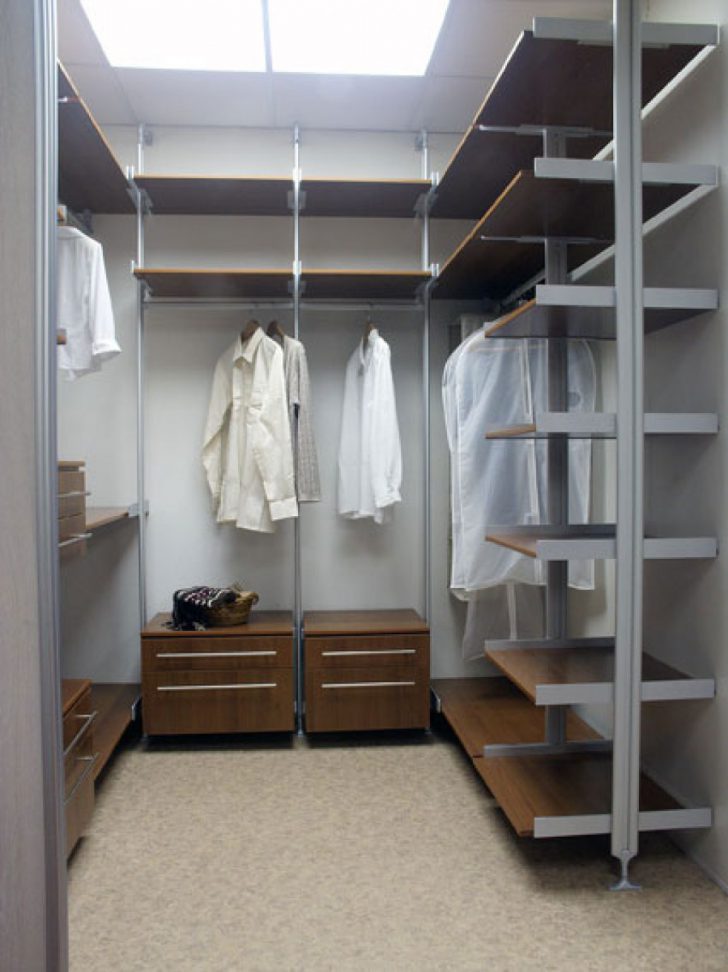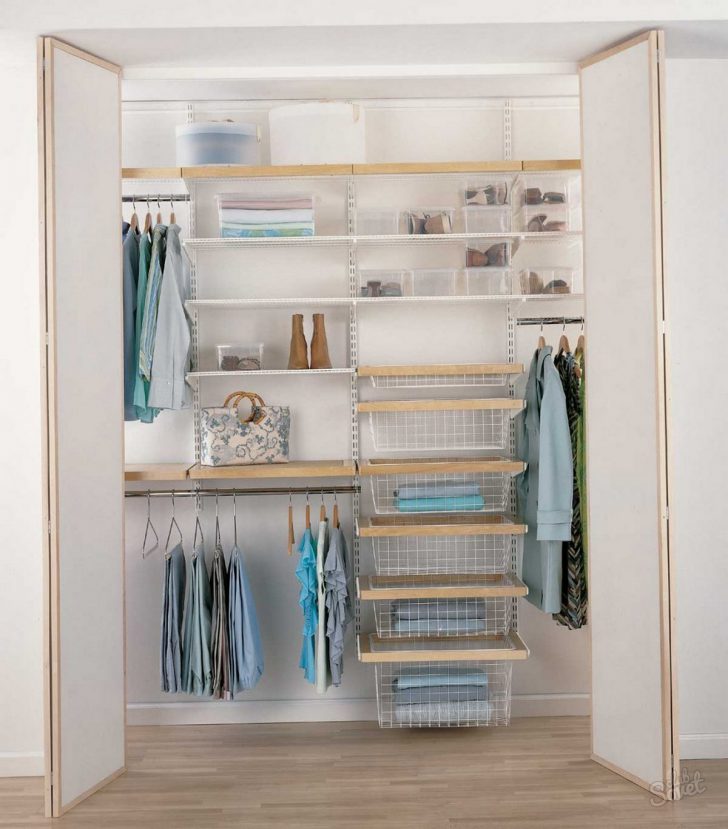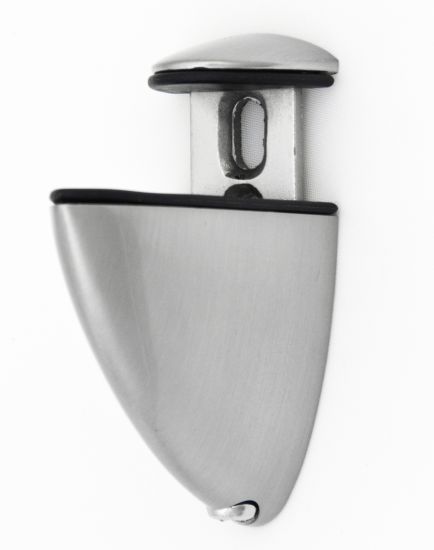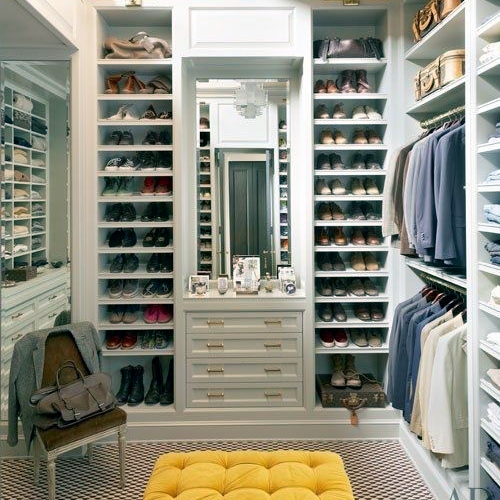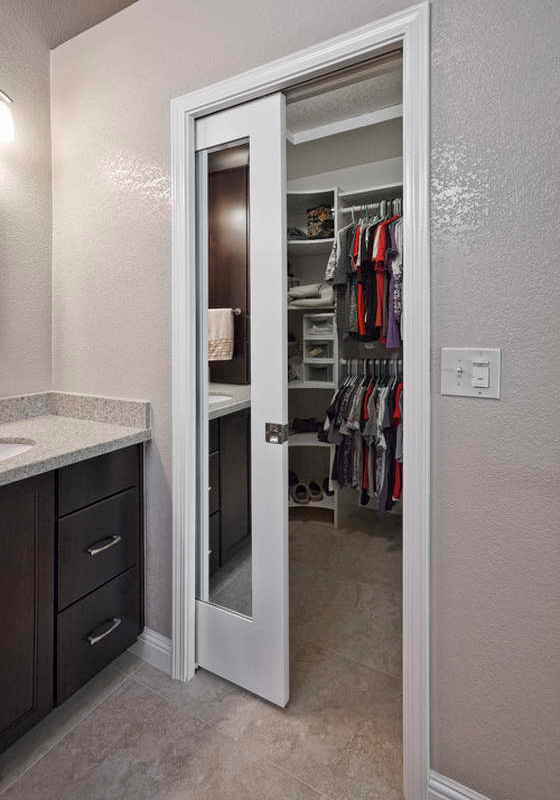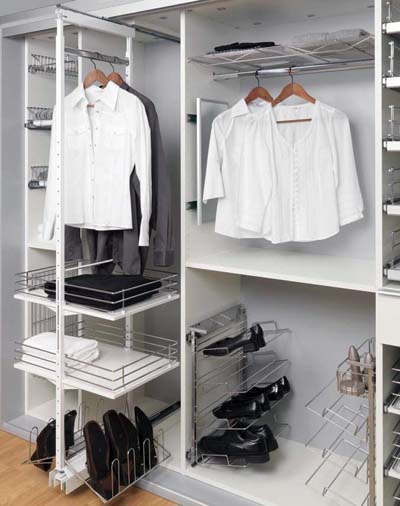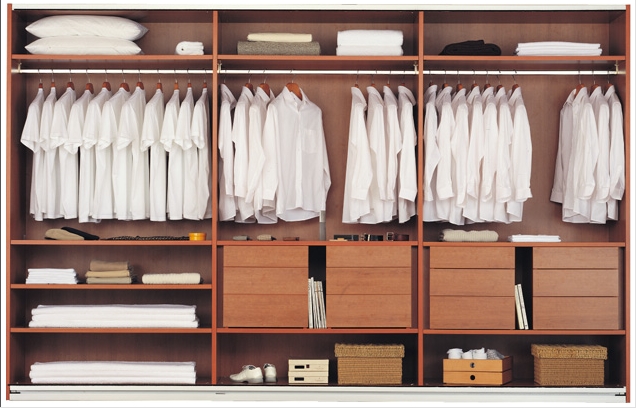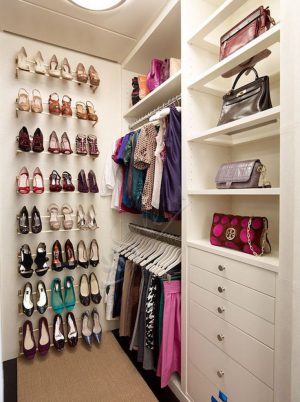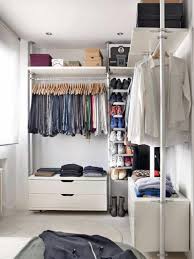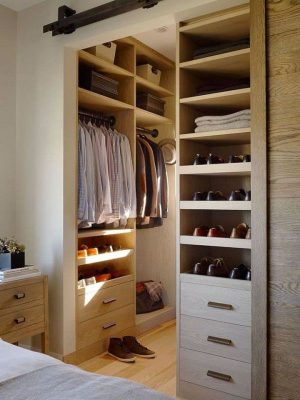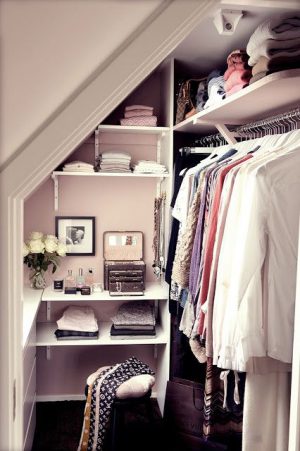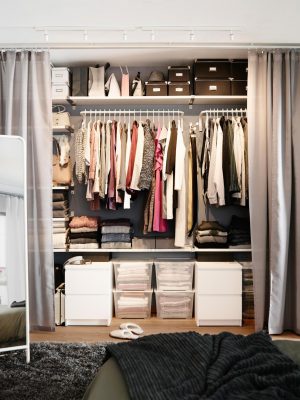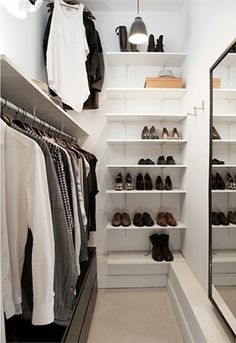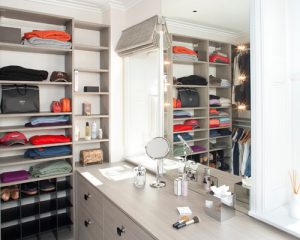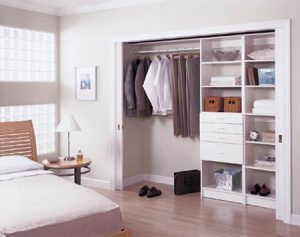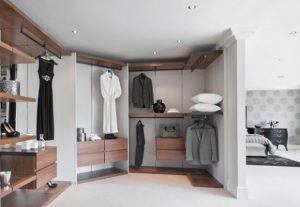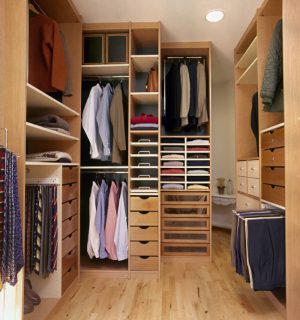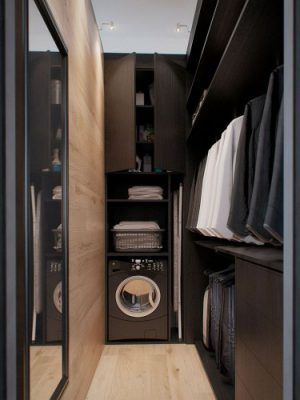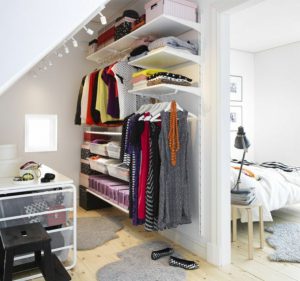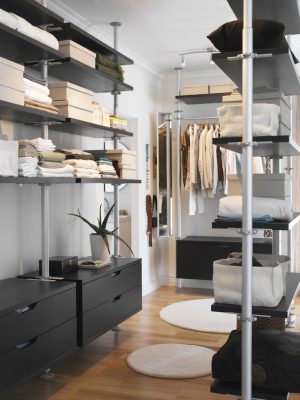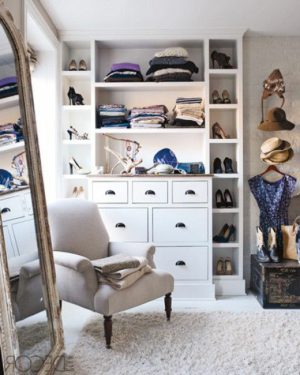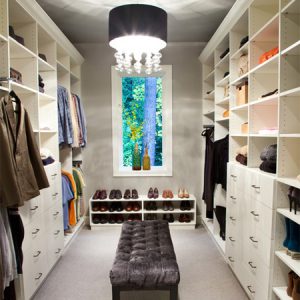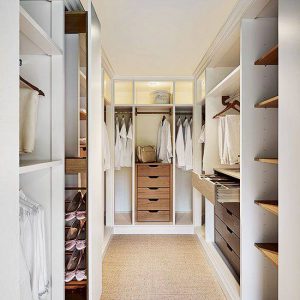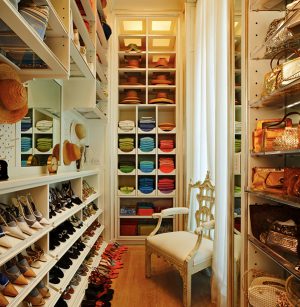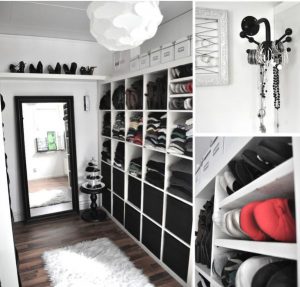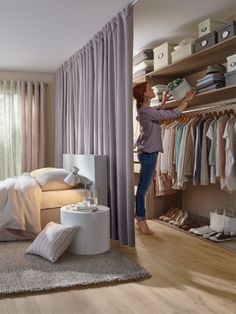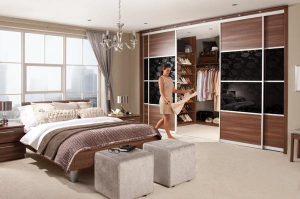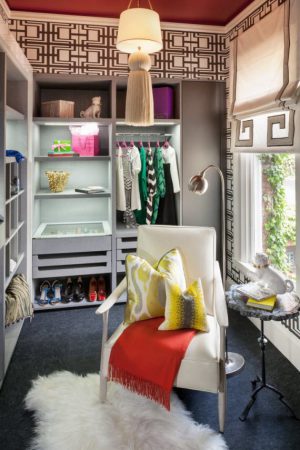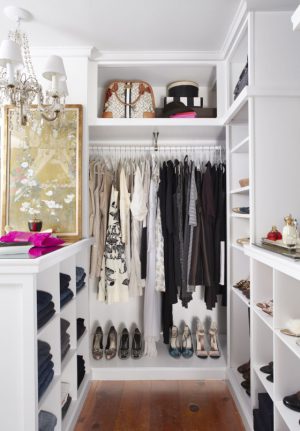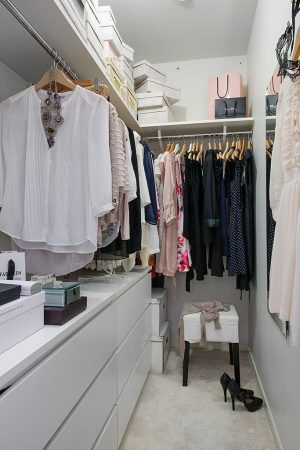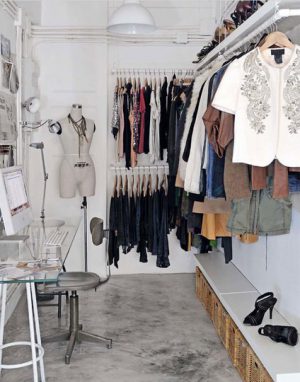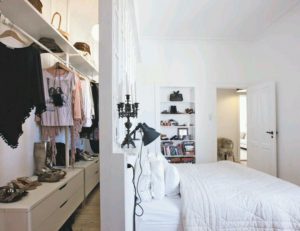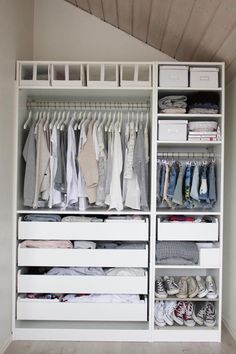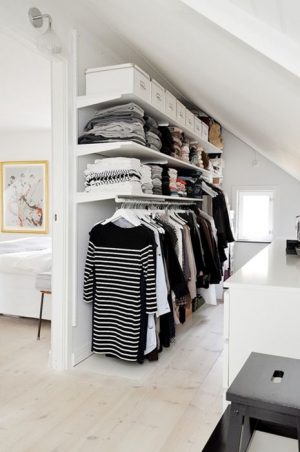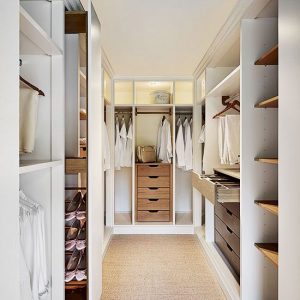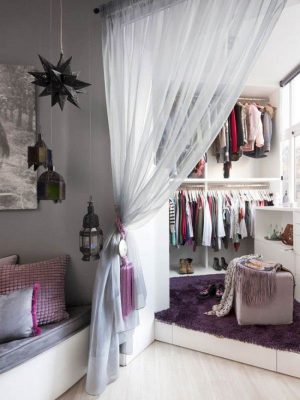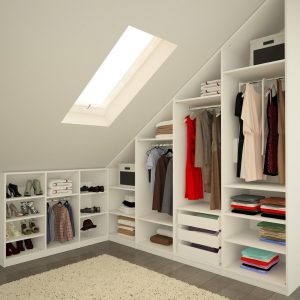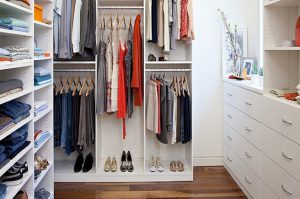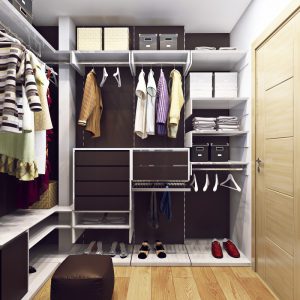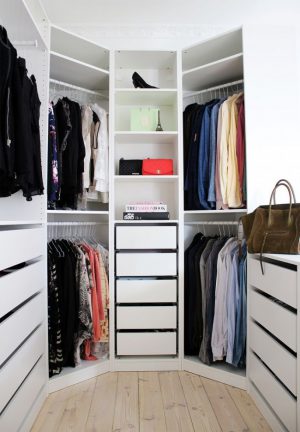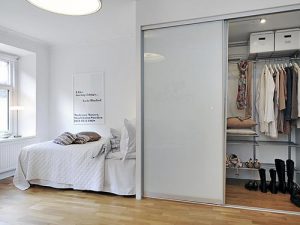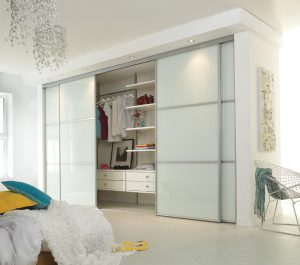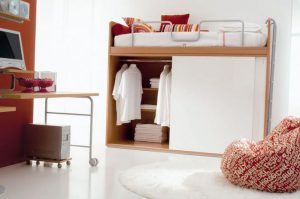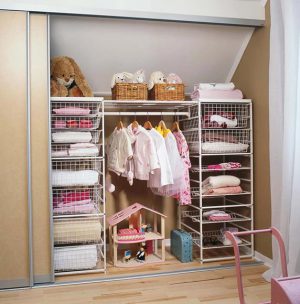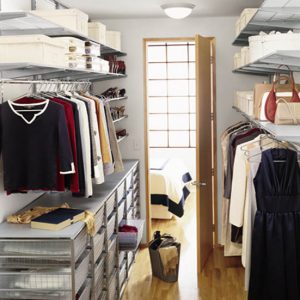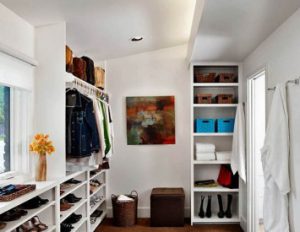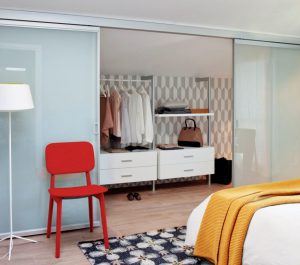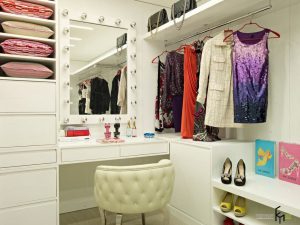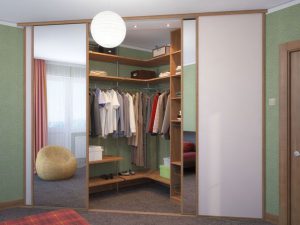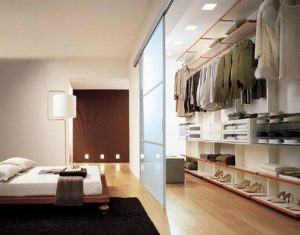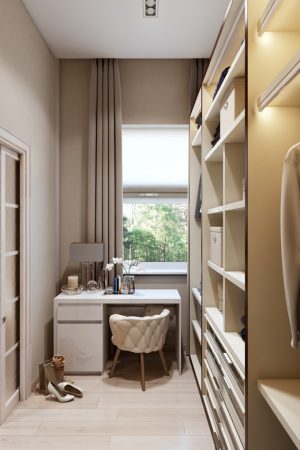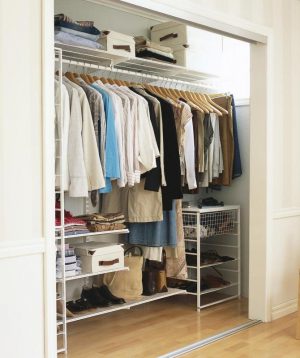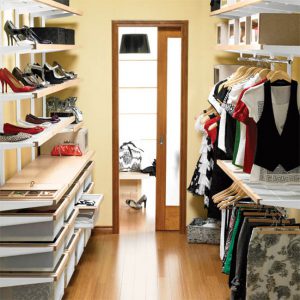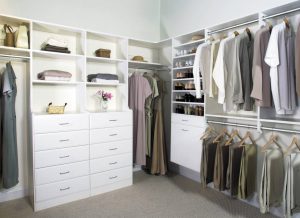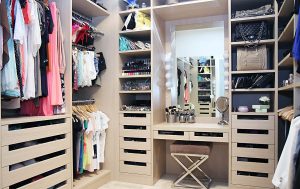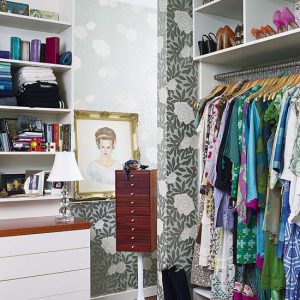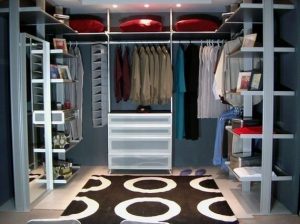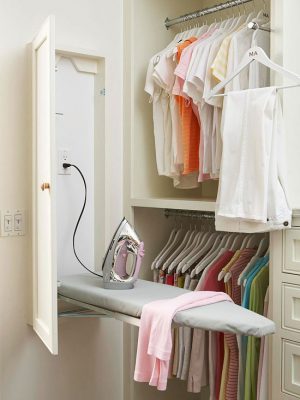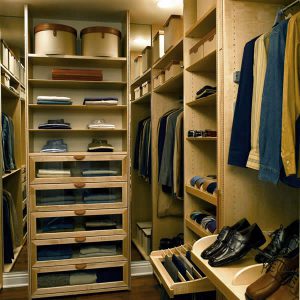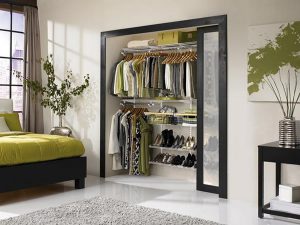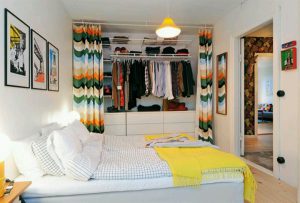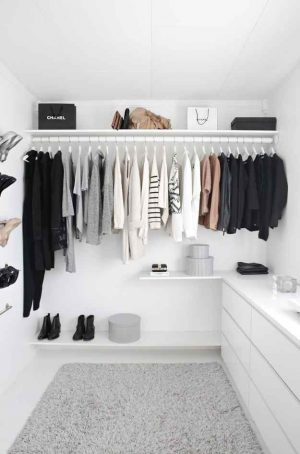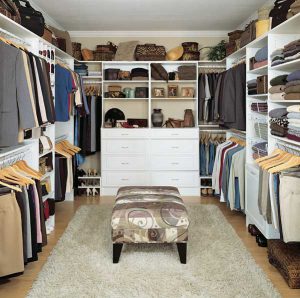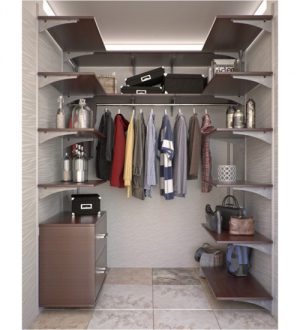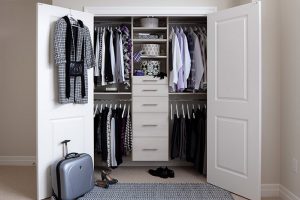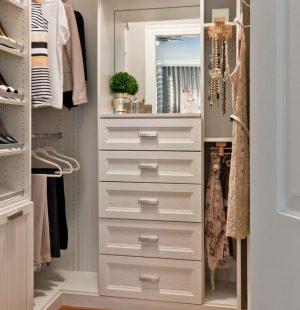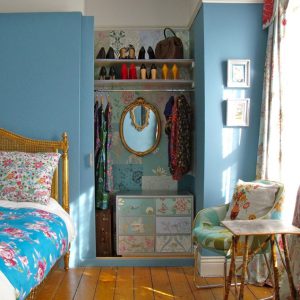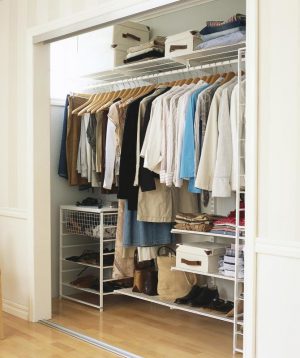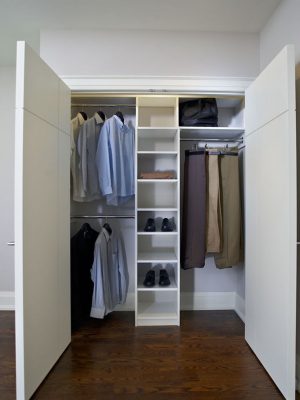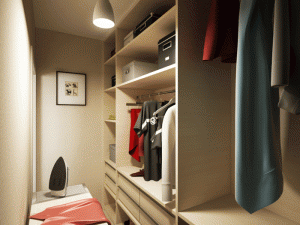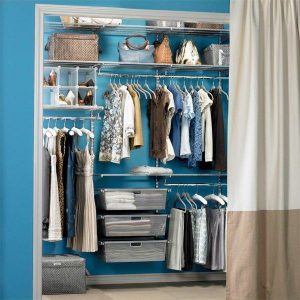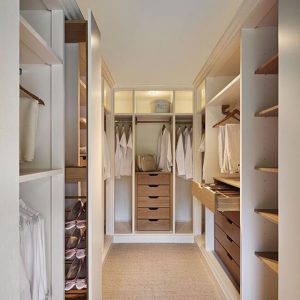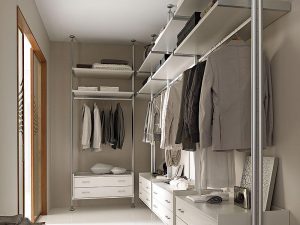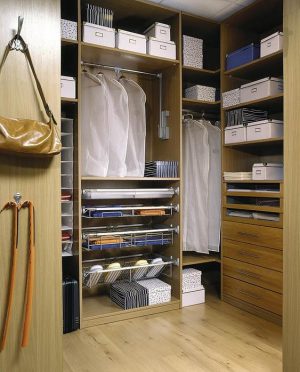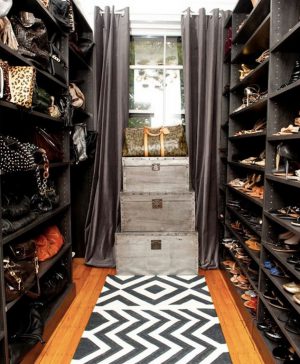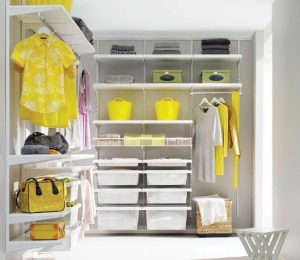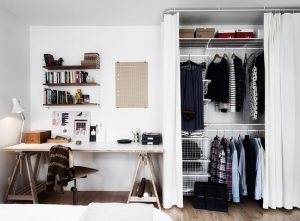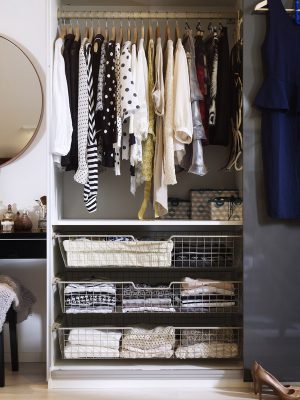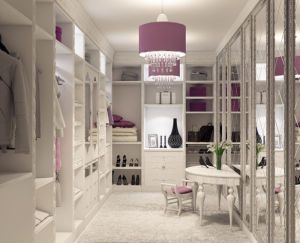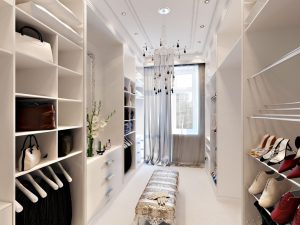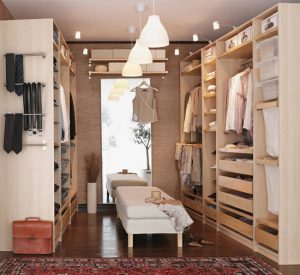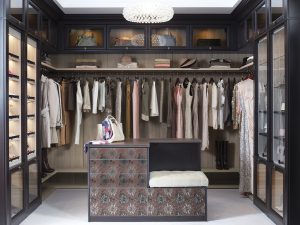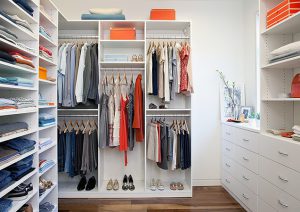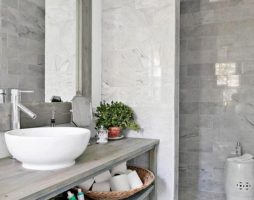Dressing rooms are increasingly appearing in our homes. The growing popularity of these premises is associated with the ability to effortlessly increase the level of comfort of life.
They are comfortable, practical and sometimes even multifunctional. You can place a lot of things in them, and all of them will be in sight, so you don’t have to search through the shelves to find the right one. Here you can immediately try on an outfit, evaluating your appearance in it. Do you think that such luxury is the prerogative of only spacious apartments? Nothing like this! A do-it-yourself wardrobe room can be equipped even in the most modest areas.
The decision to equip a dressing room is beneficial from all sides. With its appearance, there is no need for bulky cabinets, walls and chests of drawers, which take up much more space in the house than a modest room, the size of which starts from 3 squares. And the furniture is much more expensive. In general, if everything is well planned and done with high quality, then even a fraction of the space will be enough to organize a practical storage system. Let's see how it's done?
back to index ↑What is the beauty of the dressing room
“A do-it-yourself wardrobe room is a wonderful way to save money”
- The wardrobe space is a great opportunity to collect all things in one room. This will be the place:
1. Lingerie.
2. Clothes.
3. Bags.
4. Shoes.
5. Accessories.
And everything will be in sight and at hand. There will be no need to rush between cabinets and cabinets in search of the right pair of shoes or gloves. A great way to save not only time, but also nerves!
- The dressing room will unload the situation in the apartment, as it will eliminate the need to be furnished with separate wardrobes, chests of drawers, consoles, mezzanines, cabinets. The vacated space can be used to a greater advantage, for example, by placing a coveted soft corner in the living room, which, before the advent of a common storage system, did not fit into it in any way.
- A do-it-yourself wardrobe room is a wonderful way to save money. Consider what is more profitable: buy several racks, drawers and shelves to equip her space and install improvised, and perhaps even sliding doors to hide the contents from view, or invest in a massive wardrobe, a couple of chests of drawers and several shoe cabinets?
- Spacious dressing room - in general, the room is multifunctional. Pillows, mattresses and blankets can be stored here. There is always a shelf for photo albums and boxes with little things. It can store an ironing board and even equip a laundry room.
Very weighty arguments to think about allocating a separate area for storing things, right?
back to index ↑Wardrobe layout options
What will be the dressing room inside, depends solely on the size and configuration of its area. Corner option is suitable for small spaces.
U-shaped - the prerogative of spacious, elongated rooms. This is a very convenient and most spacious option for organizing space. The last method involves parallel placement of storage systems. In a space organized according to this principle, you can arrange an ironing area and hang a mirror, which will facilitate and speed up the collection.
You can look for an interesting dressing room to create with your own hands in the photo. If there is a desire to plan the object on your own, do not forget to take into account that for this room the main thing is not the aesthetics of the decor, but the ergonomic use of space and the correct placement of compartments. Every centimeter must be used. Nothing and nowhere should be empty.
back to index ↑What to fill the wardrobe?
You can equip the dressing room in different ways. You can buy drawers hidden behind expensive wooden facades and complement them with mechanized hangers, or construct racks for clothes from improvised materials and use plastic baskets in arranging the space. And what do wardrobe professionals equip?
1. Barbells and pantographs. Bars for placing clothes on hangers use at least two. The first one is high. Long dresses, raincoats, coats will be placed on it. The mounting height of this design should correspond to your height.
The second version of the rods is lower. Jackets, shirts, jackets, etc. are stored on them. They can be fixed at a meter height.
The pantographs are the most convenient in operation. This is the name of mechanical rods that descend to the required level. An excellent solution for small and high spaces where it is inconvenient to equip mezzanines. A striking example is a do-it-yourself dressing room from the pantry in the photo.
2. Retractable hangers. This is a required element. They add functionality to the system. They wear skirts and trousers. The installation height of retractable hangers is 60 cm.
3. Drawers. In the dressing room, there must certainly be a part of the modules closed from dust. They store underwear, bedding, jewelry and other accessories. Flat drawers designed to accommodate all sorts of little things are equipped with dividers. They will never have chaos from belts, suspenders and socks. Drawers can be made retractable to the full depth or only ¾, equipped with closers and mechanisms that allow you to open them with one touch. Naturally, modernization will require additional expenses, but the convenience of using the dressing room at the same time increases significantly.
4. Shelves. They are retractable and stationary type. Their width cannot be less than 30 cm. Wider shelves can be mounted under the ceiling and used as mezzanines, filling them with suitcases, boxes, rarely used inventory and seasonal clothes.
5. Baskets. A very practical container for storing crease-resistant things, shoes, and every little thing. Baskets can also have a pull-out mechanism or simply stand on a shelf. Boxes can be an alternative to baskets, however, when hiding a thing in them, you must not forget to mark what is inside. An inscription with a marker will do, but ideally take a photo of the contents and attach it to the end of the box. You will have the opportunity to express your gratitude for the organization during the hasty gathering. See how it looks in a do-it-yourself dressing room setting in the photo.
6. Modules for shoes. You can store sneakers and shoes in boxes, drawers or shoe cabinets that look like special coasters. For boots, you need to equip separate, higher sections, where shoes with a soft shaft can be carefully hung up to maintain their shape. Couples that are not used at a specific time are sent to the mezzanine. Casual shoes are stored lower.
7. Hangers for accessories (belts, umbrellas, ties). They are circular, retractable (like trouser) and suspended (fixed on the bar). Circular models are installed in the corner of the room. If the room is small, accessory hangers can be replaced with hooks or clips, for which you can always find a place on the wall or door.
8. Volumetric sections. This utility department of the dressing room is the place for ironing boards, vacuum cleaners, mops, dryers, buckets and irons. Agree, such household paraphernalia should be hidden behind the doors, if there is a task to get not only a practical, but also an aesthetic interior.
9. Mirrors. It is desirable that there are several of them: in a growth, wall and mobile version. Growth is a must. You need to be able to see yourself from all angles.
10. Puffs, consoles, dressing tables. These items appear only in spacious dressing rooms and are not mandatory. Their absence will not affect the overall functionality of the room.
back to index ↑Do-it-yourself wardrobe room in a standard apartment
Looking for a place
A small living area, mostly cultivated and mastered to the last centimeter, and yet it is quite possible to find a suitable piece for a dressing room in this space. Ideally, if you can allocate an entire room for these purposes. It’s good when at least there is a niche in its layout or the room has the shape of a “boot”. The issue can be considered resolved. Otherwise, you will have to look for other possibilities.
In principle, complex storage of things can be organized anywhere, for example, by fencing off part of the room with compartment doors or a partition made of chipboard panels, drywall sheets. The first ones are decorative initially and there are no problems with their decoration. The latter can be disguised as any design, such as bookcases. This technique perfectly justifies itself in narrow and elongated spaces.
By taking part of the area for storage, you will get a double benefit:
a) adjust the layout;
b) get an additional functional room.
There are no difficulties with the re-arrangement of ready-made niches. Here, it is enough just to install sliding doors. In the absence of a niche, consider converting to a dressing pantry.
A do-it-yourself wardrobe room is presented in a varied interpretation of the spatial organization. Choose the option that appeals to you the most and try to make it a reality.
Design project
Having decided on the place, start creating a project for the future dressing room. This will help you understand the details, namely:
- in stylistic decision
- filling features,
- organizing lighting,
- consumables.
You will have to leaf through the mountains of catalogs, review a bunch of photos before you have an original idea of \u200b\u200bhow exactly you need to organize the wardrobe space. Perhaps you will create several design sketches of the future room, which will differ not only in size and location, but also in the internal arrangement. In this case, you will have to suffer with the choice, and maybe even ask for the advice of friends or experts.
Borders
The dividing wall can be a plasterboard structure, frosted glass, glass blocks, furniture structures. The easiest way is to mark the border of the dressing room with blackout curtains, a mirror or fabric screen. It is not at all necessary that the partition be deaf and rest against the ceiling. Pedantic persons in general can stop at the open version. The beginning of the dressing area in this case is conventionally indicated by a pouffe or a narrow rack.
Open-type storage systems are stylish and interesting, but only if the exposition order is constantly observed in the displayed clothing collections. Things should be sorted according to the color spectrum, texture, style of styles, then it will be perceived as a decorative element of the room environment, and not as a mess.
Thinking about entry
In the photo, it is proposed to equip the dressing room, redone with your own hands from the pantry, with a doorway of 80 cm wide. This is enough to provide comfortable access inside. This is also acceptable for larger rooms. If you need to save space, it is better to abandon the swing options and give the palm to accordion doors.
The door leaf can be wooden, plastic, mirror, glass, fabric. As an alternative, you can consider louvered or rolling doors.
Thinking about style
A small dressing room, although allocated to a separate room, in fact, everything also remains part of the room, so it will have to be decorated in accordance with the general interior design. Do not use excellent flooring there. Who knows, maybe after a while you decide to abandon the global storage of things, then just disassembling partitions the case won't end. Do not be zealous in the decoration of external walls. The living room must preserve the integrity of the space and hide the presence of a third-party room in it.
The project can be considered successful if, when the door to the dressing room is opened, there is a feeling of an increase in the room space and it seems that the interior decor has become more interesting, and the atmosphere is more comfortable.
Internal filling
Do-it-yourself interior design of a dressing room today comes down to acquiring a “stuffing” in a furniture hypermarket. In the standard set:
1. Multi-level rods complete with clothes hangers.
2. Mesh baskets.
3. Tie brackets.
4. Trouser hangers.
5. Closed drawers.
6. Shelves in stock.
7. Hooks.
8. Rods.
In a very limited space, small open and shallow shelving should be mounted and several closed-type drawers should be added to the project. Underwear, of course, can be folded into a basket, but the presence of closed drawers is also justified from the aesthetic side, as it will give the design a complete look, making it an image of elegance and style.
You can arrange shelves in the room:
1. L-shaped.
2. U-shaped.
3. Parallel.
In a small dressing room, it is better to stop at the first option.
Now divide the room into high-rise zones:
1. Bottom.
2. Average.
3. Top.
The height of the first is 0.6 m, the second ends at a level of 2 m, the ceiling serves as the upper boundary.
The lower zone is designed for storing shoes, iron, vacuum cleaner, and various tools. Laundry is laid out immediately in closed boxes or boxes. In the middle zone, everyday items are stored. This is the patrimony of hats and ties, skirts and trousers, belts and bags. The upper part is the realm of rarely demanded things. Christmas decorations and suitcases are hidden there.
A do-it-yourself wardrobe room will turn out to be very comfortable and practical if you do not experiment with zoning its space.
Design hacks
A dressing room on 4 squares or less is a serious project. Here everything will be organized too compactly. Design hacks will help you find where and what is hidden. Shoe boxes can be provided with photo stickers. In appearance, it is easier to find out which pair lies in a particular box.
Boxes with small things are best marked with a list of contents. You can generally solve the issue with hats creatively, that is, do not put them in boxes, for which, by the way, there is not much space, but hang them on clamps on a stretched rope. The necessary little things must be placed in fabric pockets. Handbags can also be stored in special pockets.
Lighting nuances
Wardrobe lighting is multi-level. Top lighting is best organized with compact lamps such as tablets or built-in spotlights. The latter must be mounted around the perimeter of the ceiling. Additional appliances are placed on shelves and some drawers. The room should be light. This will make it easier to find the right things and make it more spacious.
In a small room, do not put halogen lamps. They tend to heat up and can be dangerous to operate. It is better to use economical, reliable and bright LED lamps.
Dressing room
“When arranging a dressing room with your own hands, you get full scope for action”
Her role, in the case of our small dressing room space, is played by a large mirror, ideally wall-mounted, in extreme cases, attached to it, allowing you to evaluate your outfit. If there is no room left for such an option, take the mirror to the outside of the door or make its canvas itself a mirror one. A fitting room can also be arranged near the dressing room. This will require a beautifully designed floor mirror, preferably in a frame and an elegant pouffe, for the convenience of putting on shoes.
When arranging a dressing room with your own hands, you get full scope for action.
Atmosphere
Yes. In the room where things are stored, it should be special. Comfort should also reign here. A soft rug thrown on the floor will help add a warm touch to the severity of modular systems. You can buy several beautiful chests, original boxes of designer baskets, hang clothes by color. Try to find an interior chip. It can be a collection of handbags or shoes. Directional light will help to focus on the subject of pride.
Ideas for organizing space can be peeped in elite boutiques. Perhaps in your dressing room you can create something similar. If it’s not always possible to find a place on the shelf for flower arrangements and a couple of fashion magazines, then writing something inspiring on the mirror with lipstick is quite within your power.
Ventilation
It should be in a dressing room of any size. Not to disturb the natural flow of air will help the correct location of the shelves and hanging clothes. Do not try to install modules closer than recommended. The room should be regularly ventilated, and also provided with a small exhaust outlet with a fan that will automatically turn on at the set time. This can be omitted if the entrance to the dressing room is closed by leaky louvered doors or curtains.
back to index ↑Dressing room from the pantry
A do-it-yourself dressing room from the closet in the photo looks just great - it will look no worse in reality, given all the subtleties of its arrangement.
We direct marafet
What is a vault? This is a collection of the most diverse and, at times, no longer needed things. All the rubbish collected over the years of living in the apartment will have to be taken out of there. Don't keep anything that hasn't been used in over a year. It is unlikely that you will ever need it, so give it away or simply throw it away.
Now look at the condition of the room. Cracks and chips on the surfaces of walls and ceilings must be repaired. It is not necessary to putty them “under the egg”, but it is necessary to make the surfaces suitable for finishing. Finishing design can be done with paint, emulsion, wallpaper. It is not necessary to adhere to stylistic decisions and apply patterns. All the same, the walls will practically not be visible due to the congestion of space, although you can practice design refinements if you wish.
Module selection
The most important stage of the organization of space. You need to choose the type of storage system that suits your needs. Think about a combination of boom modules and fixed hull structures. With a large number of dresses, suits and other items of outerwear, you will need more rods, in other cases, concentrate on equipping the room with shelves and drawers of various sizes.
How to fix
We have decided on the structures, now they will need to be fixed to the places corresponding to the layout. The choice of mounting method is influenced by the type of walls in the pantry. If these are concrete surfaces or brickwork, you can not be particularly limited. They look very neat in the decor of the FIX type fasteners. If you need to replace the shelves, they are simply dismantled. A dressing room will be neat, where Pelican fasteners were used. They are reliable and able to hold even very crowded shelves.
With drywall partitions things get worse. They are not designed for such loads, so the modules will have to be fixed to the floor and ceiling.
Comparable filling of space
When working on a do-it-yourself dressing room, converted from a pantry, photos suggest rationally distributing things in it. This approach will allow you to put everything that was planned in a limited space. Use bunk rods, all kinds of organizers and hanging shelves of a different type. All this will perfectly complement the atmosphere of a specific room.
Zoning
In a mini dressing room, it will not be quite traditional. Here not only the area of space will be broken, but also things. The latter should get three categories:
1. Relevant now.
2. Seasonal.
3. Rarely used.
The first group is stored in the most accessible and convenient places, the second and third are sent higher and further away.
doors
They can be anything, most importantly, organically fit into the common space. A mirror should be fixed on them, preferably large, if the design allows. This will add practicality to the room and make its use more comfortable, as it will allow you to evaluate yourself on the spot, without having to go to the hallway, where there is definitely a full-length mirror.
back to index ↑Practical Tips
- Arranging a dressing room with your own hands begins with high sections and rods. The remaining components are distributed over the remaining space.
- For an average family, 2-3 boxes are enough for underwear.
- Short clothes can be stored on the racks arranged one above the other.
- The shelving structure should end 50 centimeters below the ceiling surface. In this case, the last shelf can serve as a mezzanine.
- Do not place drawers higher than 1.2 meters. It will be inconvenient to use them.
- Accessories like ties, galoshes, trousers are not able to accommodate a lot of things. Their use is convenient and they look aesthetically pleasing, but for small spaces they are not practical. For comparison. Up to 8 pairs of shoes can be placed in the module compartment with a shelf depth of 60 cm, and only 3 pairs on a decorative inclined mesh structure.
- Do not make drawers and shelves deeper than 90 cm. They will deform under the weight of the load. The same goes for long rods. They also need to provide additional supports.
Photo gallery - do-it-yourself dressing room
Video
